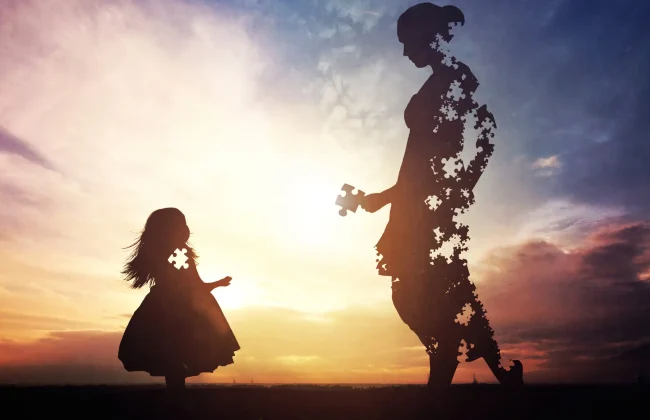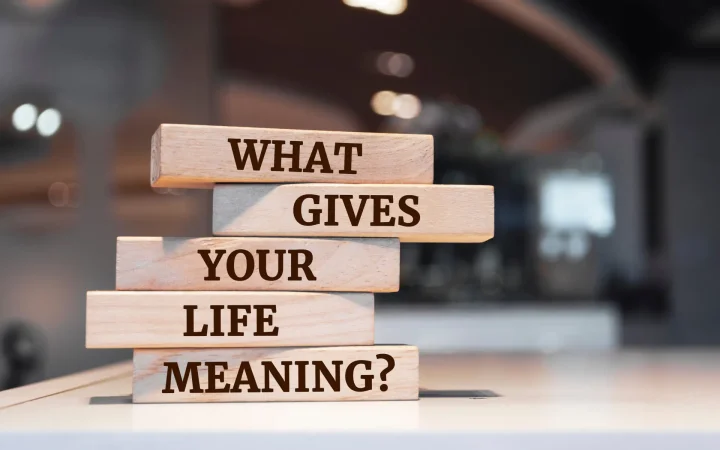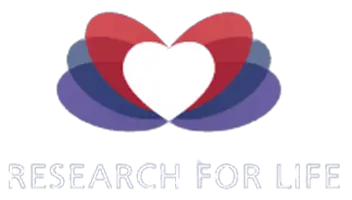
Understanding National Donate Life Month
Every April, National Donate Life Month serves as a time of reflection, gratitude, and action. Beyond its role in raising awareness, it is a deeply human reminder of the fragile yet powerful connection between life and loss. For those nearing the end of life, it presents an opportunity to leave a legacy that extends far beyond their own mortality.
For families facing difficult conversations about end-of-life decisions, this month is not just about organ and whole body donation—it is about making peace with the inevitable and finding meaning in what comes next. The decision to donate is more than an act of kindness—it is a final act of purpose, ensuring that a legacy of generosity and life continues long after we are gone.
While the focus is often on the recipients who receive a second chance, the impact on donor families is seldom discussed. National Donate Life Month is a moment for these families to find solace in knowing their loved one’s final act was one of generosity. In many ways, it transforms grief into something tangible—hope, healing, and a legacy that endures.
The History of National Donate Life Month
Established in 2003 by Donate Life America, National Donate Life Month highlights the life-saving and transformative power of organ, eye, tissue, and whole-body donation. However, the movement began decades earlier with the selfless decisions of early donors and their families, who gave others a second chance at life.
The first successful organ transplant in the 1950s revealed an urgent need for donors. Advocacy efforts grew over time, culminating in the first of many Presidential Proclamations thereafter, which recognized donation as a public responsibility that saves lives and strengthens healthcare.
While organ donation provides immediate transplants, whole-body donation fuels medical advancements, training future doctors and shaping new treatments. Despite its impact, whole-body donation remains underrecognized in public discussions, though it is essential to medical progress.
Why National Donate Life Month Matters
National Donate Life Month is more than an awareness campaign—it is a reflection of the deep, often unspoken realities surrounding life, death, and the human capacity for generosity. For those nearing the end of life, this month is a moment to consider what remains after we are gone—not just memories but tangible, lifesaving legacies.
In a society where death is often avoided in conversation, National Donate Life Month creates a space to discuss something rarely addressed: the opportunity for an individual’s final chapter to become someone else’s new beginning. Every donor represents a bridge between loss and hope, between mourning and renewal. Families who have experienced the heartbreak of losing a loved one find solace in knowing that through organ and whole body donation, their loss was not in vain—it carried forward into the lives of others.
The need for donors remains urgent. Thousands of individuals wait in limbo, their futures dependent on the generosity of strangers. Yet, donation is often misunderstood, overshadowed by myths and discomfort about the reality of mortality.

The Importance of Organ and Whole-Body Donation
Organ and whole body donation serve different yet equally vital roles in medicine. While organ donation saves lives immediately, whole-body donation fuels medical advancements, training future doctors and refining life-saving procedures.
Despite its impact, whole-body donation is often overlooked. It ensures that beyond saving lives today, donors contribute to breakthroughs that shape the future of medicine. Every donor, whether through transplantation or research, leaves a legacy that extends far beyond their own lifetime.
- The Need for Donors
Despite medical advancements, the demand for organ and whole-body donors continues to outpace supply. More than 100,000 people in the United States alone are waiting for an organ transplant, and every day, patients die due to the shortage of available organs. Meanwhile, the need for whole-body donors in medical research and education remains largely unspoken—yet without them, doctors, surgeons, and scientists would lack the ability to develop and refine life-saving techniques.
What is often ignored in public discourse is that organ and whole-body donors do not just help one person—they contribute to a ripple effect of healing and progress. One organ donor can save up to eight lives, while a whole-body donor can educate and train dozens of future medical professionals who will go on to save thousands more. Without donors, medical science stalls, transplants remain out of reach, and countless families suffer unnecessary loss.
- The Impact on Recipients and Their Families
When 21-year-old Anand suffered fatal injuries in a 2005 car accident, his parents made the selfless decision to donate his organs, saving six lives. Though devastated, they found comfort in knowing Anand’s legacy continued through others. (Source)
At The Ohio State University College of Medicine, whole-body donations provide hands-on training for future physicians, enhancing surgical skills and patient care. Families often find solace in knowing their loved one’s contribution advances medicine for generations to come. (Source)
- Donation Importance
The significance of donation extends far beyond the lives saved through transplantation. Whole-body donors quietly shape the future of medicine, providing hands-on training for surgeons, advancing new treatments, and enabling research that leads to medical breakthroughs.
Unlike organ donation, which provides immediate life-saving benefits, whole-body donation creates a lasting ripple effect—helping to refine procedures, improve patient care, and push the boundaries of what medicine can achieve. Even those who may not qualify as organ donors can still contribute to the greater good through whole-body donation. This final act of generosity fuels discoveries that will save lives for generations to come.
How to Register as a Donor
Becoming an organ and whole-body donor is a powerful decision that leaves a lasting impact beyond one’s lifetime. However, many individuals never take the step due to uncertainty or lack of information. Unlike organ donation, which is often designated through a driver’s license or online registry, whole-body donation requires pre-registration or registration at the time of passing with an institution.
The registration process varies depending on the type of donation. Organ and tissue donors can sign up through state registries, while those interested in whole-body donation can make arrangements in advance or at the time of passing with accredited programs. Whole-body donation programs contribute to advancing medical training, research, and innovation.
Discussing donation choices with family and loved ones is essential, as they may be involved in the final decision. By registering, individuals ensure that their generosity extends beyond their lifetime—whether through saving lives via organ donation or shaping the future of medicine through whole-body donation.

Honoring Donors and Their Families
Behind every life saved or medical advancement made possible by donation is an individual who chooses to give beyond their lifetime. Honoring donors is more than an act of gratitude—it is a recognition of their selflessness and the profound impact they leave behind.
Memorial services, donor walls, and remembrance ceremonies serve as public acknowledgments, but the most meaningful tributes are often personal. Letters from recipients, shared stories, and acts of continued advocacy ensure that donors are not forgotten. For families, these moments provide comfort, transforming loss into something tangible—a legacy of generosity that continues to touch lives.
- Deceased Donor Recognition
The impact of a deceased donor does not end with the transplant—it echoes in the lives of recipients, their families, and even in medical advancements that benefit future generations. While many donors remain anonymous, their gift is never forgotten.
Hospitals, transplant centers, and donation networks often hold memorial services and remembrance events where families gather to honor their loved ones. Some donor families receive heartfelt letters from recipients whose lives have been forever changed. Others visit memorial walls or participate in ceremonies that recognize their loved one’s contribution to humanity.
Yet, beyond these public recognitions, there is a deeper, more personal honor—the knowledge that their loved one’s final chapter was written in the lives they saved. It is a form of immortality, not in a physical sense, but in the way their presence continues to touch the world long after they are gone.
- Celebrating Living Donors
Living donors are often overlooked in discussions about organ and whole-body donation, yet their choice is one of unparalleled selflessness. These individuals—whether donating a kidney, a portion of their liver, or regenerative tissues—give without expecting anything in return. They step forward knowing that their decision will relieve the suffering of someone they may never meet.
Recognition for living donors extends beyond appreciation—it is about acknowledging the courage it takes to sacrifice one’s own physical well-being for another. Many transplant centers hold ceremonies honoring living donors, and some communities provide awards or public acknowledgments for those who have given the gift of life.
The Connection Between National Donate Life Month and Whole-Body Donation
National Donate Life Month is a time to challenge misconceptions about donation, yet whole-body donation remains largely absent from the conversation. While organ donation is widely recognized, whole-body donation plays a crucial role in advancing medicine, from refining surgical techniques to developing life-saving treatments that benefit future generations.
This month serves as an opportunity to educate the public about the full spectrum of donations. Encouraging discussions about whole-body donation normalizes its importance, ensuring that individuals understand its role in medical progress. By expanding the conversation beyond organ transplants, National Donate Life Month can help bridge the gap between immediate life-saving interventions and long-term scientific advancements.
Advocacy and How You Can Help
Advocacy for organ and whole-body donation begins with a conversation. Too often, families are left to make difficult decisions without knowing their loved one’s wishes. By openly discussing donation, individuals ensure their legacy aligns with their values.
Beyond personal decisions, advocacy includes dispelling myths, supporting policy changes that improve donor registration, and engaging with organizations that promote donation awareness. The future of medical progress and life-saving transplants depends on a society willing to embrace and normalize the gift of donation.

The Lasting Legacy of Donation
True impact is not measured by material possessions but by the difference one makes in the lives of others. Organ and whole-body donors leave behind more than memories—they leave healing, knowledge, and opportunities for the future. Their generosity allows others to live, medical professionals to learn, and science to advance in ways that would not be possible without them.
For families, donation transforms grief into purpose, ensuring their loved one’s influence extends beyond their lifetime. Whether through saving lives or shaping medical advancements, donation is a lasting contribution to humanity.
“What you leave behind is not what is engraved in stone monuments, but what is woven into the lives of others.” — Pericles

